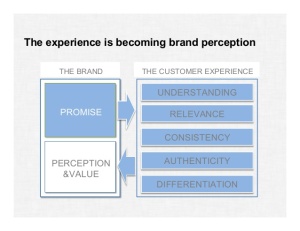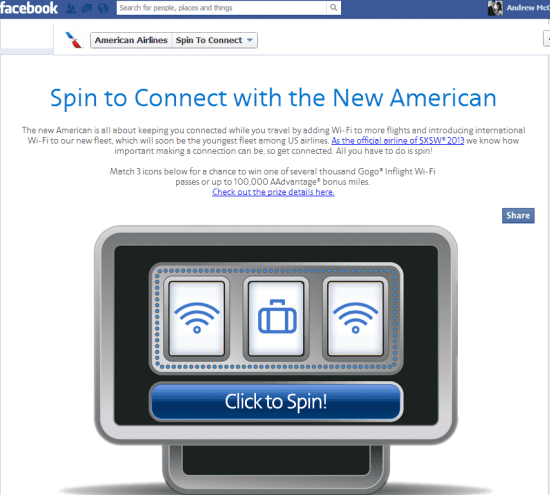I’ve been hearing and reading quite a bit about Omni – Channel Marketing of late and it’s great that companies and brands are embracing the ethos behind the term to make their products and services more connected, open and oriented towards the individual. For this reason I feel it must then share and indeed integrate with many aspects of user experience online. This article aims to summarise my thoughts on how UX approaches and the principles of UX contribute to effective Omni – Channel Marketing.
What is Omni – Channel Marketing?
Okay, so firstly it is a bit of a new buzzword or phrase (to describe something not new in real terms) and perhaps overused, along with the related but different Multi – Channel Marketing term. Omni – Channel marketing though as a strategy marketing activity helps to define the marketing decisions that are driven by the choices that consumers have in how they engage a brand. It is in my opinion best thought of and understood, as being – how brands enable their clients and consumers to use these multiple and connected channels to engage with them. Unfortunately, when it comes to omni-channel and multi-device marketing, consumers today are way ahead of most brand marketers.
A good quote to educate brands on the motivation and main benefit of this approach to marketing can be found by Kevin P. Nichols of Sapient Nitro who says…
“An omni-channel approach empowers you to create robust, personalised experiences. This ensures your content solutions have a longer shelf life and extended reach.” Kevin P. Nichols, Global Lead, Content Strategy, Sapient Nitro
Is Omni – Channel not just Multi – Channel marketing re-badged?
No, it’s related of course but a different approach. Multi-Channel, whilst driven by consumer habits is an operational set of tactics related to how a retailer allows a user to fulfil a transaction of conversion across each unique channel it owns or resides on. Omni-channel, marketing is much more aligned to seeing, empathising and realising the experience by walking in the shoes of the customer, orchestrating the customer experience across all channels so that it is seamless, integrated, and consistent. Simply put, omni-channel is multi-channel done right! And that’s where my interest in the UX relationship and synergy was inspired from.
How Does UX play a role?
We all know that User Experience is a range of carefully timed, implemented and managed strategic online usability and navigation tactics aimed at ultimately improving the online experience for unique sets of users; helping them fulfil their tasks in the context an online branded solution. As a result, in my view, UX practices of information hierarchy, user – journey mapping, persona development, persona validation, device and contextual testing and more, MUST be aligned to the Omni Channel experiences of customers, and thus the marketers aligned to this process – to truly make them worthwhile in today’s world. Here are 5 key activities, part of the UX process that can play a key role in, or provide key learnings in Omni – Channel Marketing activities and tactics
- Be a customer
Research, select, search, add to basket, purchase. Go through the same journeys that your customers do (analytics, or research if you have it) or may take. As with all good UX, if possible, these tests should be performed by externaland internal testers. Tests should be focussed on barrier identification and removal as well as delighting users. Importantly, this process must be and feel authentic to the user and be task focussed, not instructive at a granular level, to ensure a natural and organic journey and approach taken by the user.
2. Measure
UX practitioners cannot be deemed to be performing their role with the necessary diligence if data does not play a central role in the ongoing development of the digital platform. With Omni – Channel marketing data needs to become super granular and identify with the individual NOT the data set.
Of course there is personal and then there is invasive use of this personal data as marketing outpits and that’s the challenge of marketing, content and UX, to be more of the former and less of the latter. Julie Bernard of Macy’s summed things up well at last year’s Data Driven Marketing conference:
“We can now measure success in terms of the response of real people over time, in addition to measuring individual campaigns. We have enough data at the customer level to see how she interacts both online and in the store, so we can tailor messaging and offers to her appropriately by channel. We strive to balance the use of customer data to inform content relevancy with the use of consumer insights to ensure that the relevancy is coupled with a sense of discovery and inspiration.”
Ux has the task here of making sense of these data sets and importantly helping to shape the right subsequent experience that gives the user what they want, expect, and adds personal value; not repetition across the multi – channel journeys.
- Segment Your Audiences
Understanding the customer (user) and being able to create tailored experiences, journeys and desired outputs for these groups and individuals is the fundamental foundation of and describes the persona development phase of a UX project. With regards to omni – channel marketing this information and segmentation process is central to the omni – channel experiences. By understanding, hypothesising and validating the persona’s created as part of UX, we can extend this out to creating strategies around omni – channel marketing to suit their specific wants, needs and behaviours. For example if you are a designer boutique clothing retailer females between the ages of 25 and 45, you may determine that they are more likely to buy based on the designer or brand. If you then subsequently are marketing to that audience, you might highlight the brand names heavily in your online advertising, SEO and nurturing strategy.
- Keep Content Focussed on User Journeys and Use Cases
Content and messaging is key. If a customer has previously engaged or purchased your product, you probably want to consider that in your marketing. If a customer has put something into a cart, but hasn’t yet purchased, use your content to reference that intent. UX brings with its activities these “user stories” and as part of an agile process mirrored against different persona’s and their unique goals it can continually help shape the content process, as well as the key calls to actions and functions they may desire.
Brands that do this well are those that understand your previous browsing and purchasing decisions and for example send personalised emails referencing previous purchases, and recommending complementary products. This type of content and messaging makes consumers feel personally spoken to, and helps drive much higher engagement, loyalty, and purchases.
5. “Listen and Respond” across user’s preferred Channels/Devices
More and more often, people will now use multiple devices during a single transactional process. Omni – Channel Marketeers need to be aware of the multi – dimensional processes of the user and make sure they able to listen and respond to these interactions. For example, an e-commerce retailer should strive to preserve items in a cart across devices – if you add an item to your mobile shopping cart, it should still be in your shopping cart when you log in on your desktop computer.
This is where the UX tactics / relationship is once again vital to the Omni channel mix for the organisation. They need to try and continually optimise these channels to aid conversion at any stage, build intelligence and flexibility into their interfaces to help continually personalise and contextualise the experience in real time.
In Conclusion
From a personal perspective, the key learning from writing this article is that for me it is another example of how marketing now needs to continually go beyond traditional awareness and product and promotion activities. The brands that win are the ones that give their audiences what they expect, when they want it, in the correct format and not only that, delivering a user experience that is intuitive, conversion oriented and strengthens the brand.










 The key thing is though, that this approach can and does work with clients. It often achieves and leads to conversations, agreements, challenges and a combined level of understanding that emails, calls, Basecamp, Onotate, and even traditional face – to – face meetings over a specification document could never achieve.
The key thing is though, that this approach can and does work with clients. It often achieves and leads to conversations, agreements, challenges and a combined level of understanding that emails, calls, Basecamp, Onotate, and even traditional face – to – face meetings over a specification document could never achieve.



